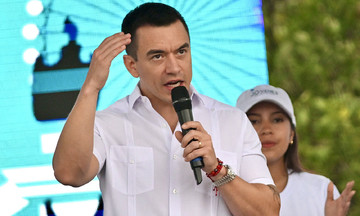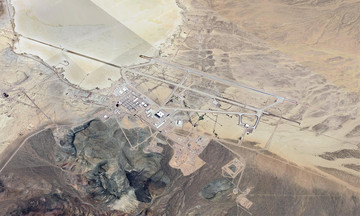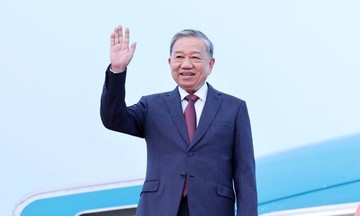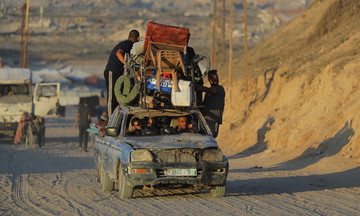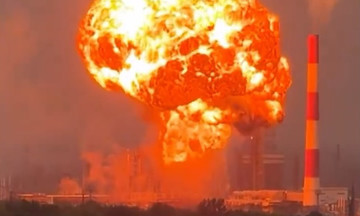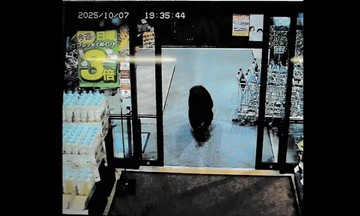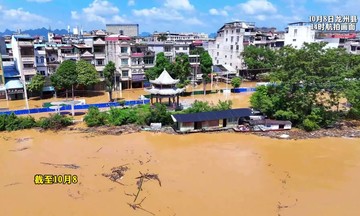In October 2022, Russia's launch of 43 Geran-2 suicide drones against Ukraine marked the weapon's debut in the conflict. Nearly 3 years later, on September 7th, Russia deployed 810 Geran drones and decoys, alongside 13 missiles, targeting various locations across Ukraine.
This represents a more than 21-fold increase in the number of long-range UAVs used in a single Russian attack. Experts believe this surge in suicide drone numbers, coupled with new technologies and tactics, has erased Ukraine's early advantage in the conflict and presents significant challenges.
The UK-based Conflict Armament Research (CAR) suggests Russia successfully replicated and improved upon Iran's Shahed-136 design, beginning domestic production of the Geran-2 just months after its initial deployment in Ukraine. The manufacturing facility has been operational since March 2023, over a year earlier than Western estimates.
Experts at the International Science and Security Institute (ISIS) in the US believe the initial production line assembled UAVs from Iranian components, but Russia transitioned to domestic production in May 2023. Leaked documents obtained by US media at the time revealed the Alabuga Special Economic Zone factory planned to produce 6,000 Geran-2 suicide drones by September 2025.
Frontelligence Insight, a Ukrainian intelligence analysis group, estimated in mid-2024 that Russia was producing over 60 Geran-2 long-range suicide drones daily, nearly 1,850 monthly, between February and April.
By July, intelligence analysts revised their estimate, suggesting the Alabuga factory had reached an average output of 3,000 Geran-2 drones per month during the first half of the year.
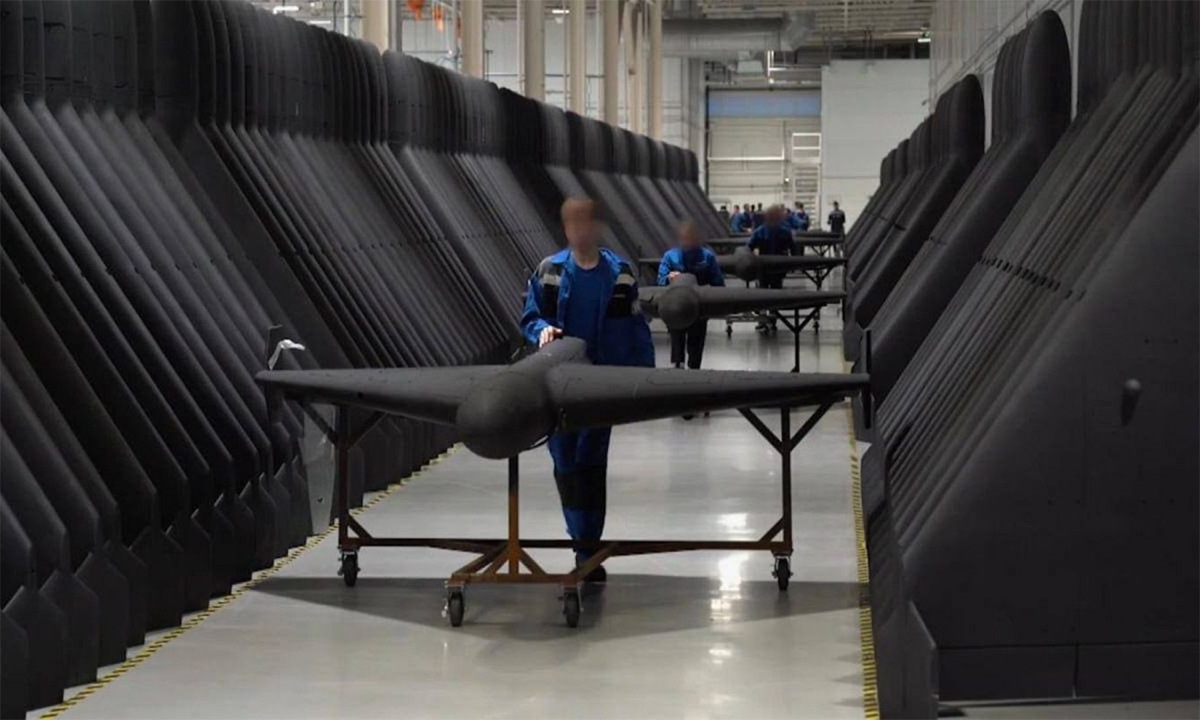 |
Russian workers transport Geran UAVs at the factory in a photo released in July. Photo: Zvezda |
According to the Ukrainian Air Force Command, Russia has also significantly increased the frequency and intensity of long-range UAV attacks since September 2024, launching over 1,000 UAVs monthly against its neighbor.
Since the beginning of the year, Russia has launched over 34,000 suicide and decoy UAVs against targets in Ukraine, 9 times more than the same period last year. The Ukrainian Air Force claims to have shot down or jammed approximately 88% of these, slightly down from 93% in 2024.
"The conflict has reached a turning point in how UAVs are operated, both on the front lines and in long-range air campaigns," said Michael Kofman, an expert at the US-based Carnegie Endowment for International Peace.
Western experts believe these figures result from a revolution in Russian UAV production. Russian officials have signaled from the highest levels that UAV and drone production is a national priority, mobilizing public and private resources for this effort.
Some Western experts estimate Russia could produce around 30,000 Geran UAVs this year and double production again in 2026. This forces Ukraine to constantly contend with Russian attacks, despite having developed a dense air defense system with top-tier equipment from the US and its allies.
"The answer is very simple and easy to understand. Russia initially could only launch a few hundred UAVs per month, then 2,000-3,000, and now 5,000-6,000. Certainly, more Russian UAVs will penetrate Ukrainian air defenses," admitted Mykola Bielieskov, an expert at the Ukrainian government's National Institute for Strategic Studies.
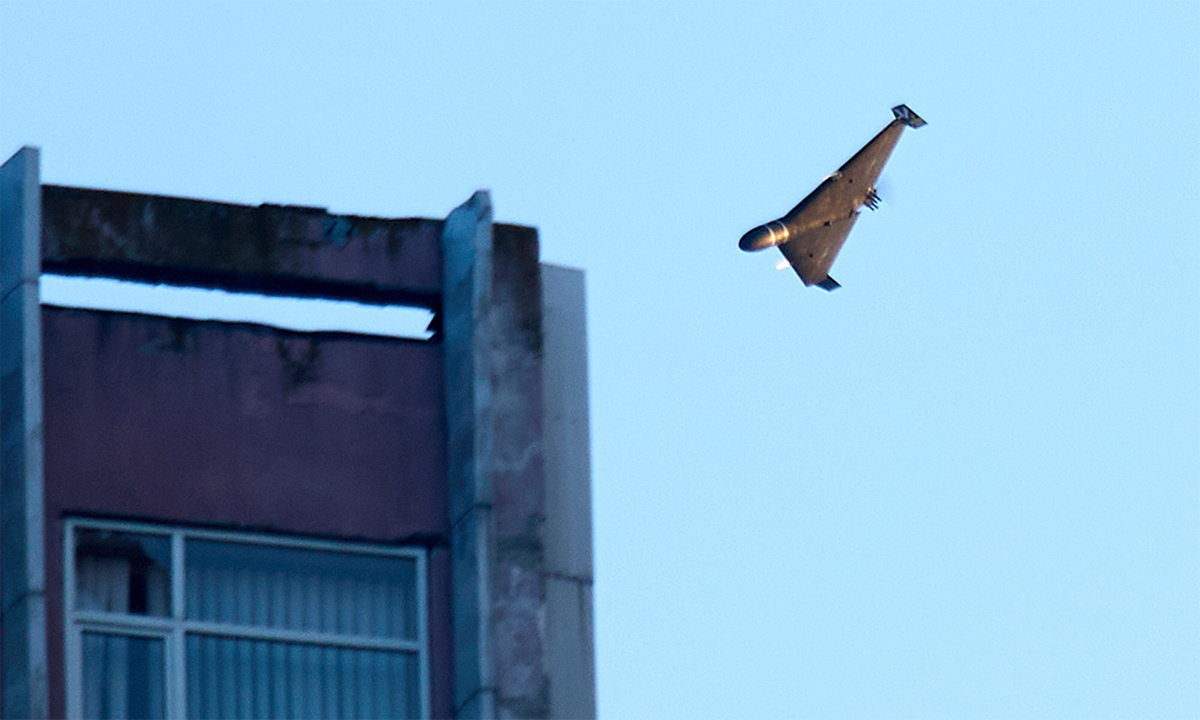 |
A Russian Geran-2 UAV approaches a target in Kyiv on 17/6. Photo: AP |
Beyond increasing quantity, Russia is also continuously improving technology, equipping UAVs with better guidance systems, enhanced anti-jamming capabilities, and new warheads. Moscow also constantly adapts its UAV attack tactics to challenge Kyiv.
Geran-2 drones now fly in swarms with complex flight paths, maneuvering around air defense zones to complicate interception efforts. The Russian military also deploys decoy UAVs made of plastic foam and plywood, some even equipped with warheads.
Russian UAVs also typically avoid open fields where Ukraine deploys mobile air defense units, instead flying along rivers or through dense forests. They can also gather in airspace several kilometers from the target before attacking simultaneously to increase the likelihood of penetrating air defenses.
As Russia ramps up long-range UAV production, Ukraine's air defenses are scrambling for new countermeasures. The task of countering UAVs falls to air defense units equipped with heavy artillery and machine guns, as well as electronic warfare forces.
Expensive Western-made air defense systems like Patriot and IRIS-T are used to protect critical infrastructure and urban areas, primarily targeting Russian missiles.
Konrad Muzyka, an expert at the Poland-based Rochan Consulting, believes Ukraine's ability to counter UAVs is worse than they publicly acknowledge. "I think they shoot down fewer UAVs than reported in the war updates," Muzyka said.
In addition to mobile fire units and electronic warfare, the Ukrainian military has also begun deploying low-cost interceptor drones to counter Russia's Geran-2 UAVs. However, expert Kofman assesses that these weapons have yet to demonstrate significant effectiveness.
"If Ukraine can scale up the deployment of interceptor drones, they could counter Russia's large-scale UAV attacks. The problem lies in production and deployment scale," he said.
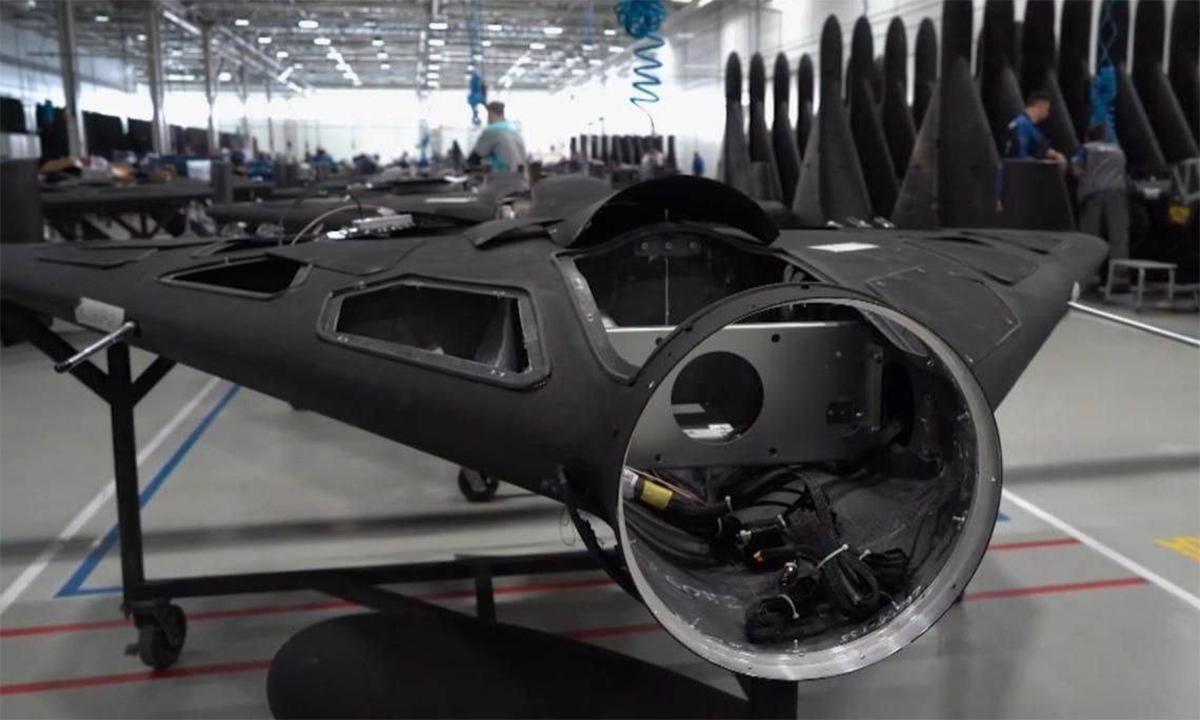 |
The fuselage of a Russian Geran UAV at the factory in a photo released in July. Photo: Zvezda |
On the front lines, Russia is also closing the gap with Ukraine in small drone warfare. This is a worrying sign for Kyiv, which has long relied on its drone advantage to offset shortages in manpower and weaponry.
Russia has pioneered the widespread use of fiber-optic drones, notable for their immunity to jamming and their operating range of tens of kilometers. The Russian Ministry of Defense established Rubikon, an elite drone warfare unit, and is working towards establishing a separate branch dedicated to unmanned aerial vehicle operations.
"Ukraine's advantage has diminished in recent months as Russia's elite drone units have entered the battlefield. Moscow's UAV and drone deployment process is also better organized, putting Kyiv at an increasing disadvantage," Kofman assessed.
Nguyen Tien (According to Irish Times, AFP, AP)



